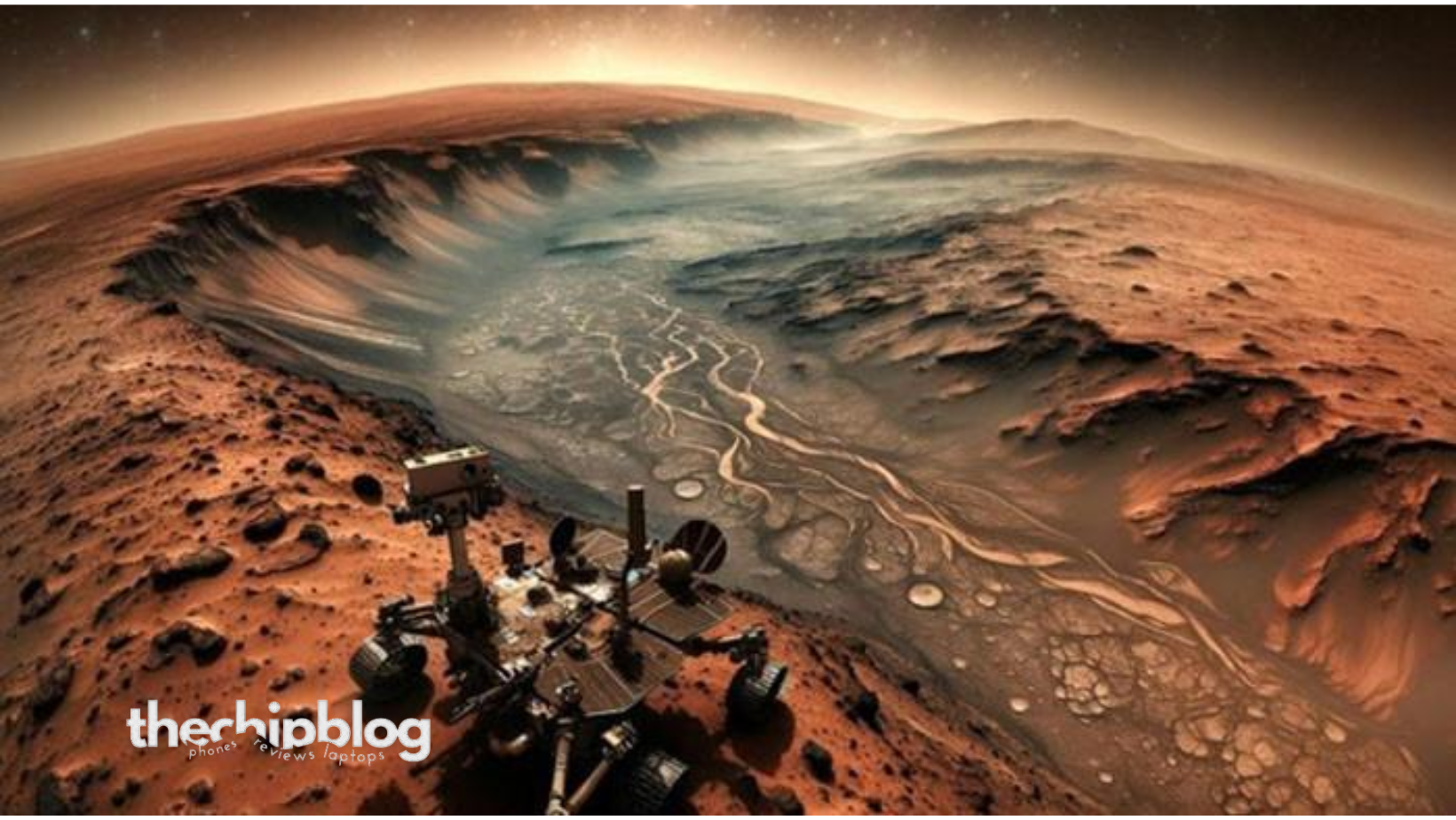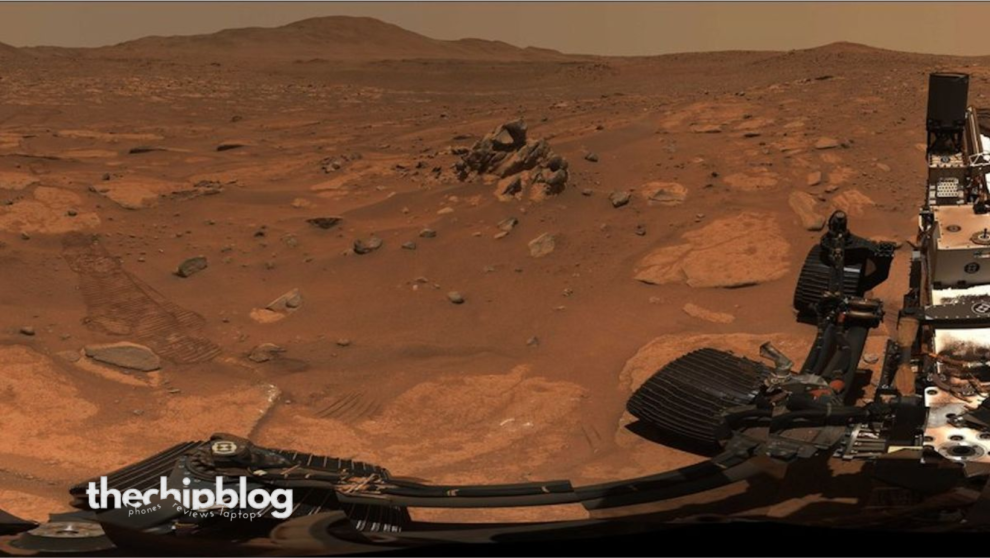Brace yourselves, for a monumental revelation that has the potential to rewrite the annals of space exploration and our understanding of the cosmos. In a groundbreaking discovery that has sent shockwaves through the scientific community, NASA’s indomitable Perseverance rover has uncovered definitive signs of ancient life on Mars, shattering long-held theories and igniting a frenzy of speculation about the implications of this cosmic bombshell.
In a triumphant moment that will forever be etched in the collective consciousness of humanity, the Perseverance rover has delivered undeniable evidence that Mars, our enigmatic celestial neighbor, once harbored the conditions necessary for life to thrive. This extraordinary revelation not only reshapes our perception of the Red Planet but also opens up a vast array of possibilities for unraveling the mysteries of our solar system and the origins of life itself.
As the dust settles on this historic achievement, a multitude of questions arise, each one more captivating than the last. Brace yourselves, dear readers, as we embark on an exhilarating journey through the depths of this cosmic revelation, exploring the intricacies of NASA’s Perseverance rover’s groundbreaking discovery and the profound implications it holds for our understanding of the universe.
What Exactly Did the Perseverance Rover Discover?
According to the awe-inspiring reports from NASA, the Perseverance rover has detected a series of organic compounds and biosignatures that definitively point to the existence of ancient microbial life on Mars. These findings were made possible by the rover’s cutting-edge scientific instruments, including the Scanning Habitable Environments with Raman & Luminescence for Organics & Chemicals (SHERLOC) spectrometer and the Planetary Instrument for X-ray Lithochemistry (PIXL).
The organic compounds discovered by the rover’s instruments are believed to be the fossilized remains of microorganisms that once thrived in the now-arid Martian landscape. These compounds, which include complex carbon-based molecules and intricate chemical structures, are widely accepted as indicators of biological activity.
Furthermore, the Perseverance rover has also uncovered what appears to be fossilized microbial mats and stromatolites – layered rock formations that are commonly associated with ancient microbial life on Earth. These biosignatures, coupled with the presence of organic compounds, paint a compelling picture of a once-thriving ecosystem on the Red Planet billions of years ago.
Why Is This Discovery So Groundbreaking?
The implications of NASA’s Perseverance rover’s discovery of definitive signs of ancient life on Mars are nothing short of seismic. This monumental revelation has the potential to reshape our understanding of the universe and our place within it, igniting a surge of scientific curiosity and exploration that could propel humanity into a new era of cosmic enlightenment.
Firstly, this discovery shatters long-held beliefs about the ability of Mars to support life, even in its ancient past. For decades, scientists have debated and theorized about the possibility of life on the Red Planet, with many dismissing the notion due to its harsh and seemingly inhospitable environment. However, the Perseverance rover’s findings provide irrefutable evidence that Mars once harbored the necessary conditions for life to flourish, a revelation that will undoubtedly send shockwaves through the scientific community and rewrite textbooks worldwide.
Secondly, the discovery of ancient life on Mars has profound implications for our understanding of the origins and evolution of life itself. By studying the fossilized remains and biosignatures found by the Perseverance rover, scientists can gain invaluable insights into the fundamental processes that gave rise to life on Earth and potentially elsewhere in the universe. This knowledge could unlock new avenues of research and potentially shed light on the mechanisms that govern the emergence and sustainability of life in the cosmos.
Moreover, the revelation of ancient life on Mars has reignited the age-old question: are we alone in the universe? While the discovery does not directly confirm the existence of intelligent life elsewhere, it does offer a tantalizing hint that life may be more widespread and resilient than previously thought. This newfound perspective could fuel a renewed sense of curiosity and drive humanity to explore the cosmos with renewed vigor, potentially leading to even more groundbreaking discoveries in the years to come.
Unraveling the Mysteries: Key Questions and Concerns
As the euphoria surrounding NASA’s Perseverance rover’s historic discovery begins to settle, a myriad of questions and concerns emerge, each one more intriguing than the last. These inquiries will undoubtedly fuel intense scientific debate and drive the next phase of exploration and research, as humanity strives to unravel the mysteries of ancient life on Mars.
What does this discovery reveal about the habitability of Mars?
The presence of organic compounds and biosignatures on Mars suggests that the planet once harbored conditions conducive to life, at least in its ancient past. Understanding the specific environmental factors that allowed life to thrive on Mars, such as the presence of liquid water, atmospheric composition, and geological processes, could provide valuable insights into the search for habitable worlds beyond our solar system.

How did life on Mars originate and evolve?
While the Perseverance rover’s findings confirm the existence of ancient life on Mars, the origins and evolutionary trajectory of these lifeforms remain shrouded in mystery. Did life arise independently on Mars, or was it seeded from Earth or another celestial body through a process known as panspermia? Unraveling these questions could shed light on the fundamental mechanisms that govern the emergence and evolution of life throughout the cosmos.
What can we learn about the diversity of life from these ancient Martian organisms?
The fossilized remains and biosignatures discovered by the Perseverance rover offer a tantalizing glimpse into the diversity of life that once existed on Mars. By studying these ancient organisms, scientists may gain insights into the range of adaptations and survival strategies employed by life in extreme environments, potentially informing our understanding of the resilience and versatility of life itself.
How does this discovery impact our search for extraterrestrial life?
The confirmation of ancient life on Mars has profound implications for the ongoing search for life beyond Earth. If life could thrive on the Red Planet billions of years ago, what does this suggest about the potential for life to exist on other celestial bodies, such as the moons of Jupiter and Saturn, or even exoplanets orbiting distant stars? This discovery could provide a critical framework for narrowing the search parameters and informing future exploration efforts.
What are the ethical and philosophical implications of this discovery?
The revelation of ancient life on Mars raises a host of ethical and philosophical questions that humanity must grapple with. How should we approach the study and potential preservation of these ancient lifeforms? What are the implications for our understanding of the origins and nature of life itself? And perhaps most profoundly, what does this discovery mean for our perception of our place in the cosmos and the potential existence of other intelligent life?
Implications and Future Exploration
As the world comes to terms with the seismic implications of NASA’s Perseverance rover’s discovery of definitive signs of ancient life on Mars, it becomes increasingly clear that this revelation is not merely a scientific milestone but a pivotal moment in human history. The ramifications of this discovery will reverberate across various domains, shaping our understanding of the cosmos, igniting a renewed sense of exploration, and potentially altering the course of humanity’s journey through the vast expanse of space.
One of the most immediate implications of this discovery is the impetus it provides for further exploration and research. With the tantalizing possibility of uncovering even more evidence of ancient life on Mars, space agencies worldwide will undoubtedly redouble their efforts to study the Red Planet in greater detail. This could pave the way for future robotic missions equipped with even more advanced instrumentation and analytical capabilities, as well as laying the groundwork for eventual human exploration and settlement on Mars.
Furthermore, the discovery of ancient life on Mars will likely spur a renewed interest and investment in the search for extraterrestrial life beyond our solar system. With the confirmation that life can indeed arise and thrive on other celestial bodies, the quest to find habitable exoplanets and potentially even intelligent civilizations takes on a heightened sense of urgency and possibility. This could lead to the development of more sophisticated telescopes and instruments capable of detecting biosignatures on distant worlds, as well as the planning of ambitious interstellar missions to explore promising candidates up close.
Moreover, the Perseverance rover’s groundbreaking discovery has the potential to catalyze a paradigm shift in our understanding of the origins and nature of life itself. By studying the fossilized remains and biosignatures found on Mars, scientists may gain invaluable insights into the fundamental processes that govern the emergence and evolution of life, potentially unlocking new avenues of research in fields such as astrobiology, biochemistry, and evolutionary biology.
Perhaps most profoundly, the revelation of ancient life on Mars has the power to reshape our perception of our place in the cosmos. If life can indeed take root and flourish on other worlds, even under extreme conditions, it challenges our long-held notions of exclusivity and uniqueness. This realization could foster a sense of humility and inspire a deeper appreciation for the vastness and complexity of the universe we inhabit, ultimately driving humanity to explore the cosmos with renewed curiosity and a sense of wonder.
As we stand on the precipice of this historic discovery, one thing becomes abundantly clear: NASA’s Perseverance rover has opened a gateway to a new era of exploration, understanding, and cosmic enlightenment. The definitive signs of ancient life on Mars are not merely a scientific achievement but a profound revelation that will echo through the ages, inspiring generations to come to push the boundaries of human knowledge and embrace our role as explorers of the final frontier.
















Add Comment